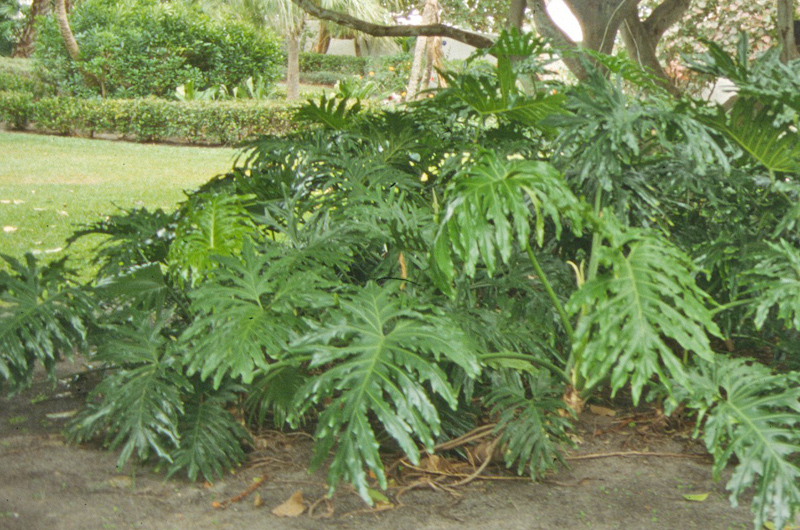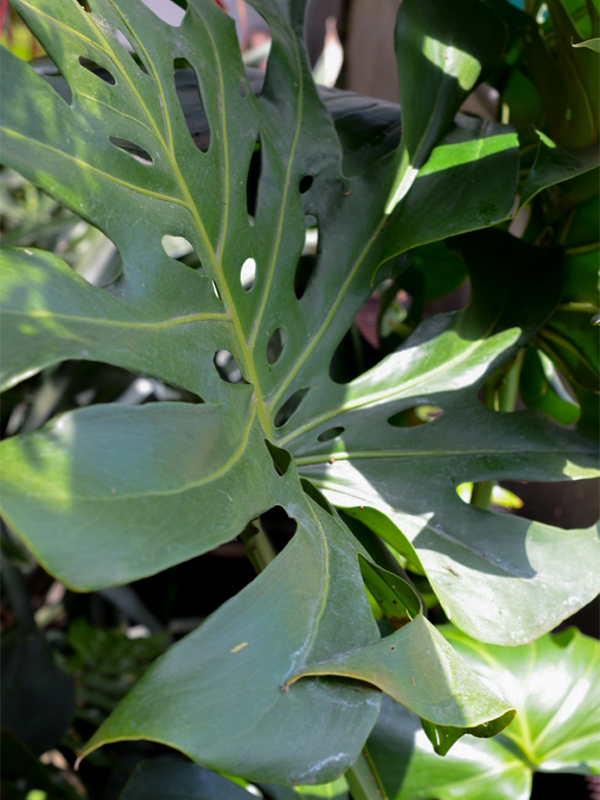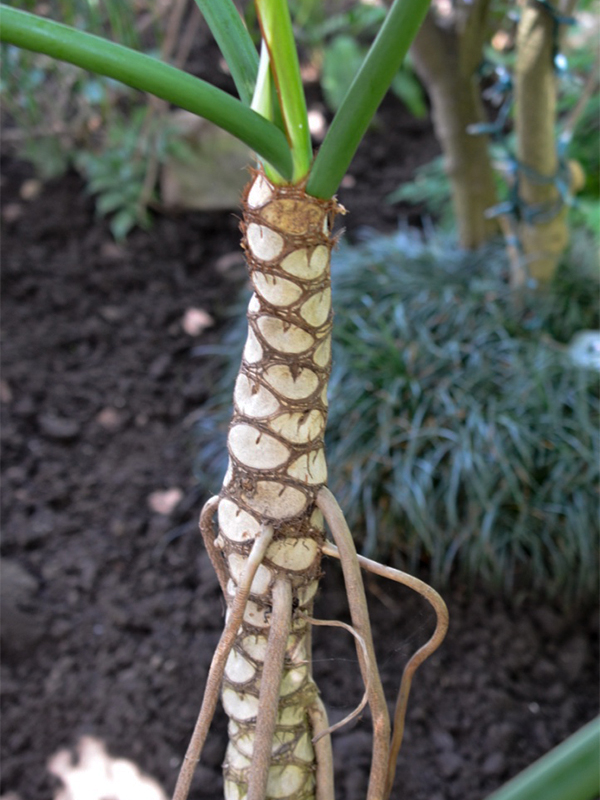
Perennials, Tropicals > Philodendron > Philodendron selloum > Philodendron selloum
Philodendron selloum
Tree Philodendron, Cut-leaf Philodendron, Lacy Tree Philodendron
Origin: Tropical America.
| Family |
| Araceae |
| Genus |
| Philodendron |
| Species |
| selloum |
| Category |
| Perennials, Tropicals |
| Type |
| Vine |
| Synonyms |
| Philodendron bipinnatifidum |
| USDA Hardiness Zone |
| 9 - 11 |
| Canadian Hardiness Zone |
| Requires cold season protection under glass. |
| RHS Hardiness Zone |
| H1c - H4 |
| Temperature (°C) |
| -10 - 10 |
| Temperature (°F) |
| 14 - 50 |
| Height |
| 3 - 5 m if not climbing |
| Spread |
| 3 -5 m or more |
Photographs
Description and Growing Information
Flowering Period
| General Description |
| A tropical plant grown as a houseplant in temperate climates. |
| Landscape |
| Houseplant or as a feature in large indoor plantings such as shopping malls. In tropical zones it is used as a major landscape plant often in place of shrubs. |
| Cultivation |
| Best grown in partial to full shade with rich, moist soil. Does not tolerate salt build up so flush soil regularly or used distilled water for irrigation. |
| Shape |
| Loosely rambling and epiphytic in nature. |
| Growth |
| Fast |
| ID Characteristic |
| Large, distinct, deeply dissected foliage. |
| Bark/Stem Description |
| The trunk is relatively thick and woody with characteristic “eye-drop” leaf scars. It can produce aerial roots that absorb water and nutrients. |
| Leaf Description |
| Leaves are simple, large, deeply lobed, and attached to long, smooth petioles. They can grow up to 1.2 m long. |
| Flower Description |
| The small, non-petalled flowers are on a spadix that is enclosed within a spathe. |
| Colour Description |
| Leaves range from medium green to dark green. |
| Texture Description |
| Leaves are glossy. |
| Notable Specimens |
| Centennial Conservatory, Thunder Bay, Ontario, Canada. |
| Ethnobotanical Uses (Disclaimer) |
| All parts of the plant are toxic. When eaten, intense burning and swelling of the lips, tongue, and throat, as well as difficulty speaking. Nausea, vomiting, and diarrhea may also occur. Frequent contact with sap may cause skin irritation. |


